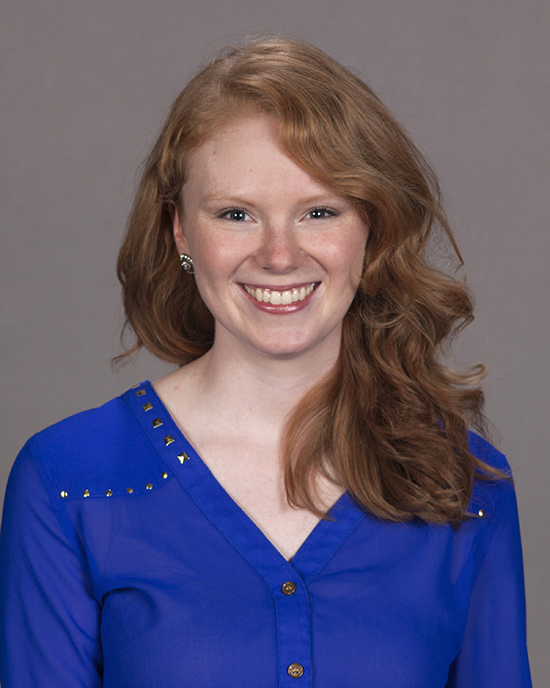Telling ‘Tails:’ Where Veterinary Medicine and Storytelling Meet
Story by Margaret Preigh, CVMBS Communications

Amy Gulick, a third-year veterinary student in the Texas A&M College of Veterinary Medicine & Biomedical Sciences (CVM), might spend her days learning about hard-science topics such as anatomy and biochemistry, but at heart she is a self-described storyteller.
“To me, every disease has a story. It has a beginning, then it has a progression, and then it has an outcome, which is hopefully good,” the Lubbock native said. “What interests me about medicine is that it’s about trying to understand, ‘what is the story behind this patient?’”
Gulick’s narrative instincts might come from her parents, who also see the world in stories.
“My mom is an English teacher and my dad is a journalist and editor, so it was instilled in me. Reading is just as natural as breathing in my family,” Gulick said. “My dad is always asking, ‘What’s the story behind this?’ If he ever wants to know something, he doesn’t just say, ‘So what’d you do with your friends?’ He says, ‘So what’s the story behind your time with your friends?’”
In high school, Gulick followed her passion for storytelling to the world of broadcast journalism, working on a student news program with Channel 12, a local television station.
“I started out doing man-on-the-street type interviews. It was really fun,” she said. “I got to go to our local fair and interview people and to elementary schools and interview kids. It was so fun; I loved that.”
Though Gulick felt more strongly pulled to the world of veterinary medicine, she still credits her experiences with broadcast journalism as being formative.
“I feel like I had more poise and comfort in my veterinary school interview than I would have, had I not been in broadcast journalism and had those experiences,” Gulick said. “It gave me interpersonal skills. When you interview people, you hopefully learn how to talk to people and how to listen to them. I think I really grew in that area.”
These strong communication skills have benefited Gulick in many areas, from the technical to the creative.
“I love to write. Of course, writing for broadcast journalism is very different than scientific, technical-type writing,” Gulick said. “I do a little fiction writing on the side for fun, too, but I love it all. I love to tell stories and I think that’s what you’re doing with a scientific paper, is you’re saying, ‘Here’s the background of this disease.’”
In veterinary school, Gulick indulges her scientific interests as well.
“I love studying pathology and the course of disease and helping to understand that more. I also really love how animal behavior interrelates with disease,” Gulick said.
Before veterinary school, Gulick earned her master’s degree in animal science from Texas Tech University. There, Gulick was exposed to the world of scientific research by studying a respiratory condition affecting cattle at high-altitudes.
“I studied a disease called brisket disease in cattle,” Gulick said. “For my master’s degree, I investigated some pieces of the puzzle that are contributing to affected animals going into heart failure from this condition.”
In cows suffering from brisket disease, reduced oxygen levels at high altitudes cause their arteries to thicken, which decreases the internal diameter of their arteries and subsequently increases blood pressure within their lungs. This makes it more difficult for the cow’s heart to pump blood and can eventually cause heart failure.
Through research, Gulick has been able to connect her passion for animal health with her affinity for storytelling. After graduating veterinary school, she hopes to carry this passion into a career in academia.
“I definitely think that my background in journalism has contributed to my love of research,” Gulick said.
Gulick believes that her non-traditional background gives her an advantage in her path to becoming a veterinarian.
“I think my experience gives me a really interesting and different perspective than a lot of my peers. Some of them come from a family where everybody for the last 50 years has been a veterinarian, which is super cool,” Gulick said. “But my experience gives me a different perspective, which is also really neat.”
Gulick insists that she is not the only veterinary student with a creative side, however.
“There’s really so much diversity within veterinary medicine,” Gulick said. “People here have amazing and diverse talents. We have ballet dancers in our class, we have singers, we have competitive swimmers. We have people with an amazing array of talents. I think it’s so inspiring to be able to share space with people like that and to hopefully contribute some interesting things of my own to our diverse field.”
###
For more information about the Texas A&M College of Veterinary Medicine & Biomedical Sciences, please visit our website at vetmed.tamu.edu or join us on Facebook, Instagram, and Twitter.
Contact Information: Jennifer Gauntt, Interim Director of Communications, Texas A&M College of Veterinary Medicine & Biomedical Science; jgauntt@cvm.tamu.edu; 979-862-4216


